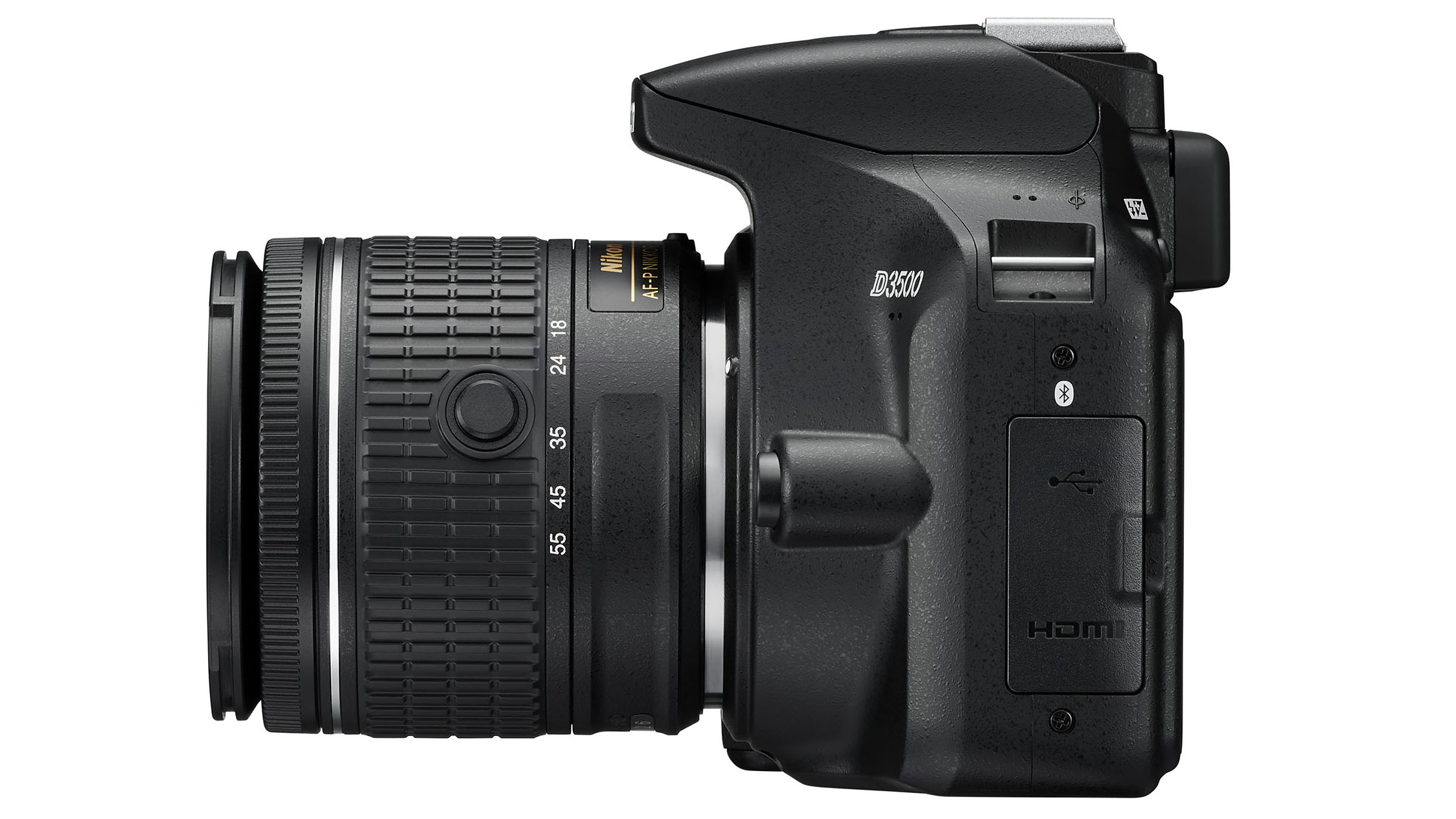Nikon D3500 review
Does this entry-level digital SLR deserve its ‘classic’ tag? Find out in T3's review of the Nikon D3500


Offering an impressive battery life, richly detailed images and a relatively compact build for its class, if you want a DSLR format camera and are just starting out on your photographic journey, then the Nikon D3500 is a can’t-go-wrong option.
-
+
Great battery life
-
+
Richly detailed images
-
+
Relatively easy to use for beginners
-
+
Access to a wide range of optional lenses and accessories from a well-established brand
-
-
Fixed LCD screen
-
-
No 4K video option
-
-
Modest continuous shooting speed
Why you can trust T3

For the past few years the focus – if you’ll forgive the pun – has very much been on increasingly compact, interchangeable lens mirrorless cameras.
Given that, is there still space for the conventional digital SLR – or DSLR – in the kitbags of fledgling photographers?
Traditionally these have been bulkier than their mirrorless siblings – for the simple reason their integral mirror set up requires a certain amount of physical space between internal sensor and lens mount.
While everybody wants small, compact and convenient, there are some key advantages of investing in a ‘classic’ DSLR like Nikon’s entry level D3500 we’re featuring here.
To highlight just one on this successor to the D3400, there are hundreds of directly compatible lenses and accessories available stretching back years – not just from Nikon, but via third party manufacturers too.
Plus, with DSLRs facing increased competition from innovative mirrorless models, it goes without saying there are some great deals to be presently had on the Nikon D3500 and its ilk.

Nikon D3500 review: Design & Handling
You know what you’re getting on the polycarbonate construction D3500 from the outset, due to its deployment of that classic chunky DSLR look and feel. The control layout is spacious and uncluttered. There is a deeper grip on the Nikon D3500 when compared with its D3400 predecessor, yet it’s marginally more compact overall.
Get all the latest news, reviews, deals and buying guides on gorgeous tech, home and active products from the T3 experts
However, unlike like semi professional DSLRs that can operate in temperatures down to -10°C, the Nikon D3500 has a more conservative operating temperature range of 0°C to 40°C.
As with all DSLRs, there is a large eye level viewfinder via which to compose shots, plus, here, the alternative of a 3-inch 921K-dot resolution LCD screen if switching the camera to Live View mode.
The rear screen’s implementation is modest however, in that while it provides 100% frame coverage and a 170° viewing angle, the LCD is fixed to the back and non angle-adjustable. It doesn’t provide touch screen operation either, which most people trading up from a smartphone may well expect to find at this point.

Nikon D3500 review: Features
At the heart of the Nikon D3500 is an APS-C sized imaging sensor – physically larger than that found in your smartphone or point-and-shoot compacts, which suggests better picture quality overall. This delivers the ability to capture up to 24.2 million pixel shots.
A greater surface area means more room for all those pixels to ‘breathe’ – meaning less image noise/grain visible when shooting in more challenging conditions – such as low light without flash.
As well as stills, the Nikon D3500 provides access to Full HD video, at capture speeds up to a cinematic looking 59.94fps. Given that this DSLR is entry-level model, it’s no surprise we don’t get the 4K resolution video offered by newer, albeit more expensive DSLRs and mirrorless models.
With sound captured by a tiny built-in mono microphone, it’s fair to say we’re not achieving broadcast-quality audio here either. And, unfortunately, unlike on some more expensive models, we can’t add an external microphone.
When it comes to connectivity, on the Nikon D3500 we’re given Bluetooth rather than Wi-Fi, but this at least allows us to send images to a smartphone, as well as use a handset as a remote control if desired.

Nikon D3500 review: Performance
The Nikon D3500 offers a maximum stills capture rate of 5fps, which, while it’s better than the bog-standard 3fps many entry-level DSLRs traditionally offered, means that this DSLR won’t be the first port of call for anyone wanting a camera specifically for sports or wildlife photography.
The D3500 is however adequate for most casual shooting situations, such as tracking the kids and pets running around, and if primarily shooting in the JPEG file format. Matters get more challenging if opting instead for more data-hungry Raw files.
Naturally, there are better cameras out there offering improved frame rates – but you’ll pay comparably more for the privilege.
Though this camera’s autofocus will occasionally lose subjects moving around the frame if they weren’t dead centre to begin with, the D3500 gives a relatively solid performance that is more than adequate given its status as a starter DSLR.
One area in which this relatively modest DSLR excels, however, is battery life, thanks to what its maker Nikon refers to as its ‘low energy design’. It offers up to 1550 captures per charge of its EN-EL14a cell, which is up there with the performance from much more expensive models.
Nikon D3500 review: Image samples








On the Nikon D3500 DSLR, the combination of a 24.2 million pixel effective resolution and Nikon’s EXPEED 4 image processor provides richly detailed shots that, in contrast to the well-saturated results out of competing mirrorless cameras from the likes of Sony and Panasonic, favour a more naturalistic treatment of colours.
This means that on occasion we found ourselves wanting to boost contrast and saturation in the image editing program of our choice to add a little more punch to shots, and avoid them looking a little flat.

Nikon D3500 review: Verdict
Offering an impressive battery life, richly detailed images and a relatively compact build for its class, if you want a DSLR format camera and are just starting out on your photographic journey, then the Nikon D3500 is a can’t-go-wrong option.
While, battery performance aside, there’s not a massive amount of difference between the D3500 and its predecessor, a 24-megapixel APS-C sensor, Full HD video recording using built-in monoaural microphone and rear plate 3-inch LCD sensor is pretty much what we expect for this class of camera and the budget being asked.
Liked this?
- Best instant camera
- Best travel camera
- Best camera for kids
- Best entry-level camera
- Best cheap full-frame camera

Gavin Stoker has been writing about photography and technology for the past 20 years. He currently edits the trade magazine British Photographic Industry News - BPI News for short - which is a member of TIPA, the international Technical Imaging Press Association.